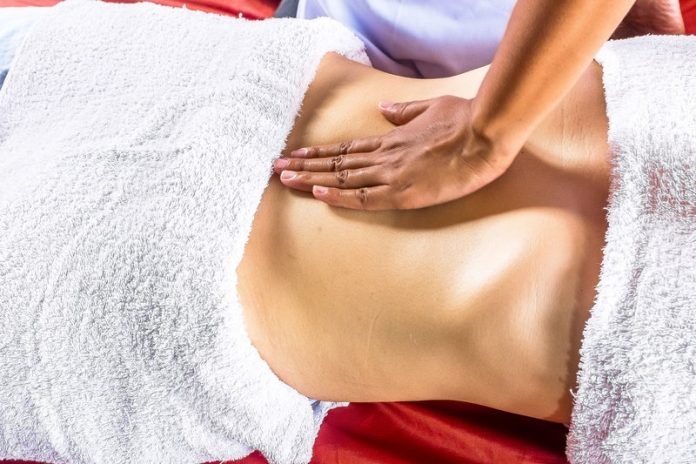
Massage has been used to treat sore, injured muscles for more than 3,000 years, and today many athletes swear by massage guns to rehabilitate their bodies.
In a new study from Harvard, researchers found massage can actually improve healing after severe injury.
They found massage rapidly clears immune cells called neutrophils out of severely injured muscle tissue.
This process also removed inflammatory cytokines released by neutrophils from the muscles, enhancing the process of muscle fiber regeneration.
The team previously examined the effects of mechanotherapy on injured tissues in mice several years ago, and found that it doubled the rate of muscle regeneration and reduced tissue scarring over the course of two weeks.
In the study, the team created a small device that used sensors and actuators to monitor and control the force applied to the limb of a mouse.
They applied consistent, repeated force to injured muscles for 14 days.
While both treated and untreated muscles displayed a reduction in the amount of damaged muscle fibers, the reduction was more pronounced and the cross-sectional area of the fibers was larger in the treated muscle, indicating that treatment had led to greater repair and strength recovery.
The greater the force applied during treatment, the stronger the injured muscles became, confirming that mechanotherapy improves muscle recovery after injury.
Then the scientists analyzed a wide range of inflammation-related factors called cytokines and chemokines in untreated vs. treated muscles.
They found a group of cytokines was dramatically lower in treated muscles after three days of mechanotherapy, and these cytokines are linked to the movement of immune cells called neutrophils, which play many roles in the inflammation process.
Treated muscles also had fewer neutrophils in their tissue than untreated muscles, suggesting that the reduction in cytokines that attract them had caused the decrease in neutrophil infiltration. Neutrophils are known to kill and clear out pathogens and damaged tissue.
The team also found the treated mice’s muscles showed larger fiber size and greater strength recovery than those in untreated mice.
These findings indicate that researchers can influence the function of the body’s immune system in a drug-free, non-invasive way.
The study provides great motivation for the development of external, mechanical interventions to help accelerate and improve muscle and tissue healing that have the potential to be rapidly translated to the clinic.
If you care about muscle health, please read studies about how this drug may help prevent muscle aging in older people.
For more information about exercise and health, please see recent studies about this common exercise could keep your body young and results showing that this exercise training is best for older people.
The study is published in Science Translational Medicine. One author of the study is Bo Ri Seo, Ph.D.
Copyright © 2021 Knowridge Science Report. All rights reserved.



